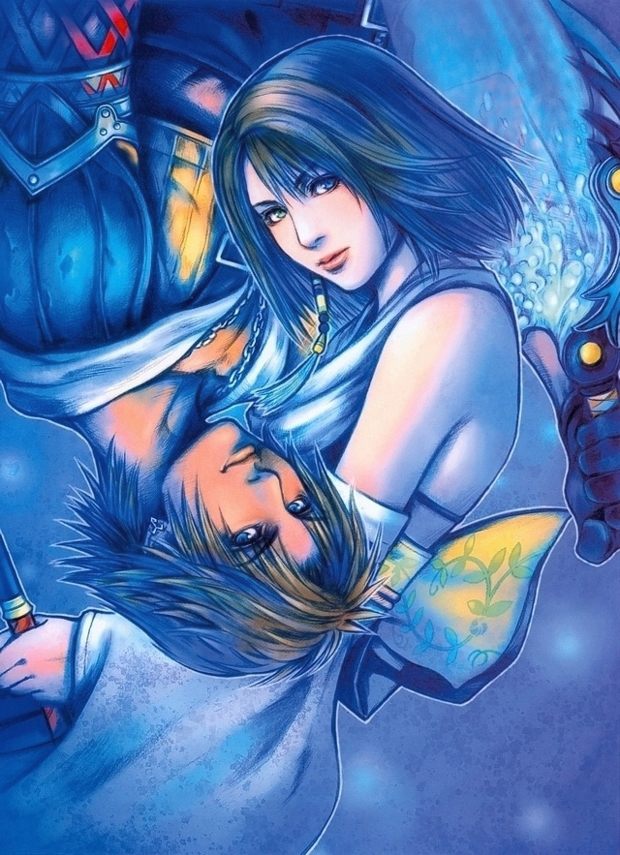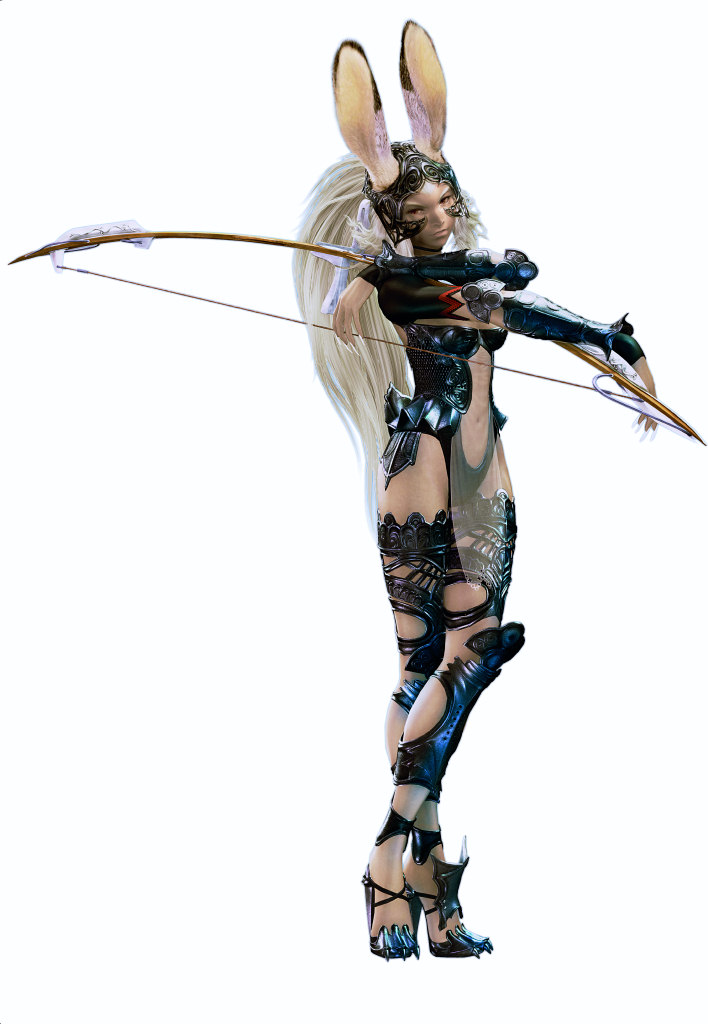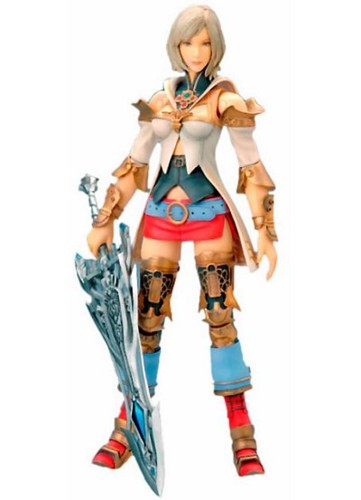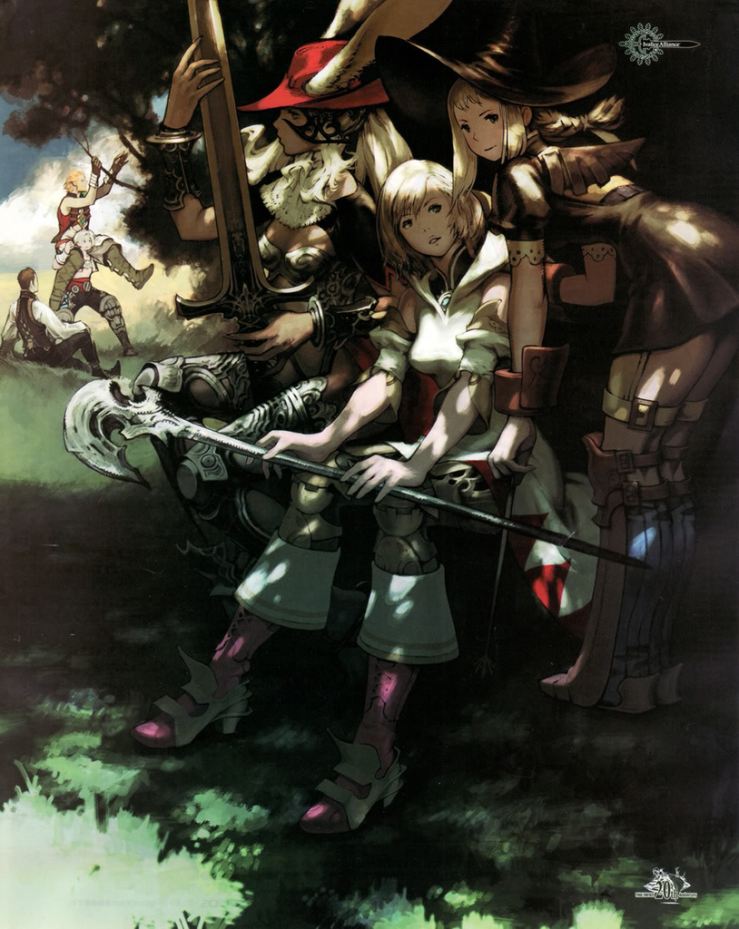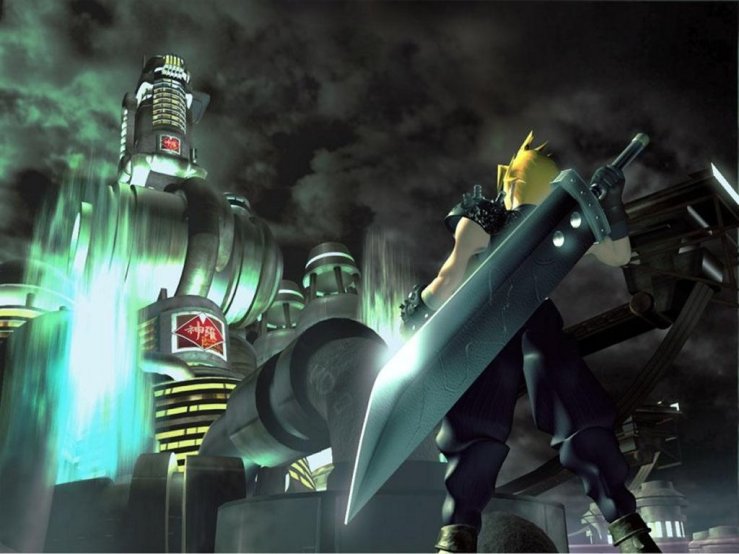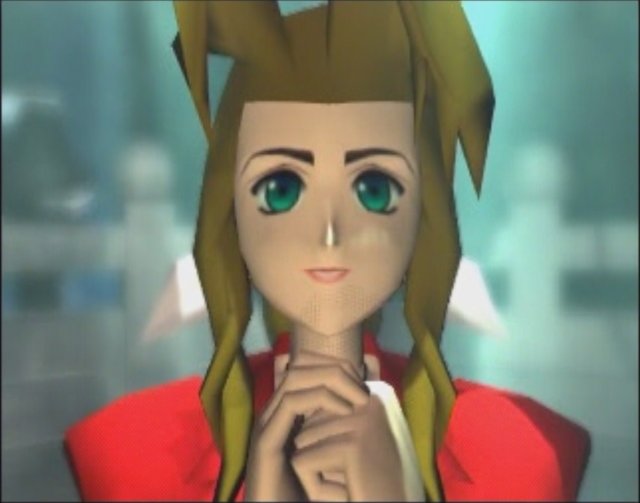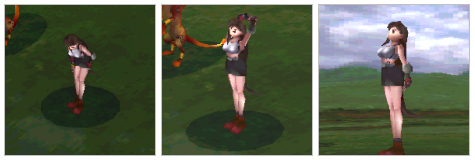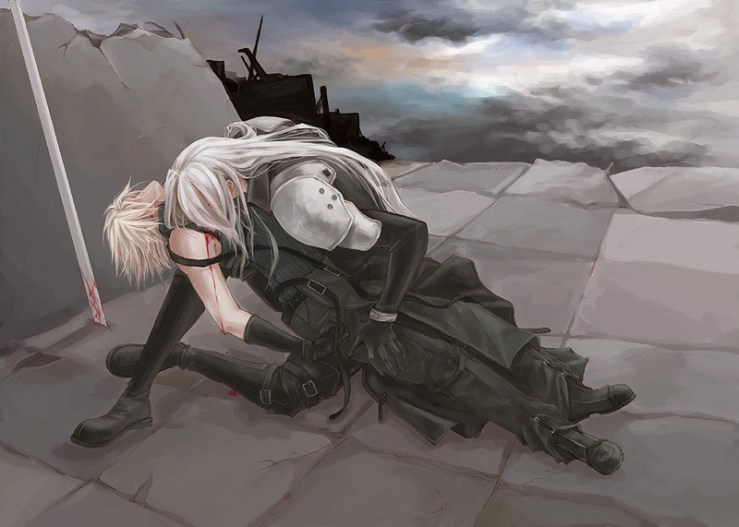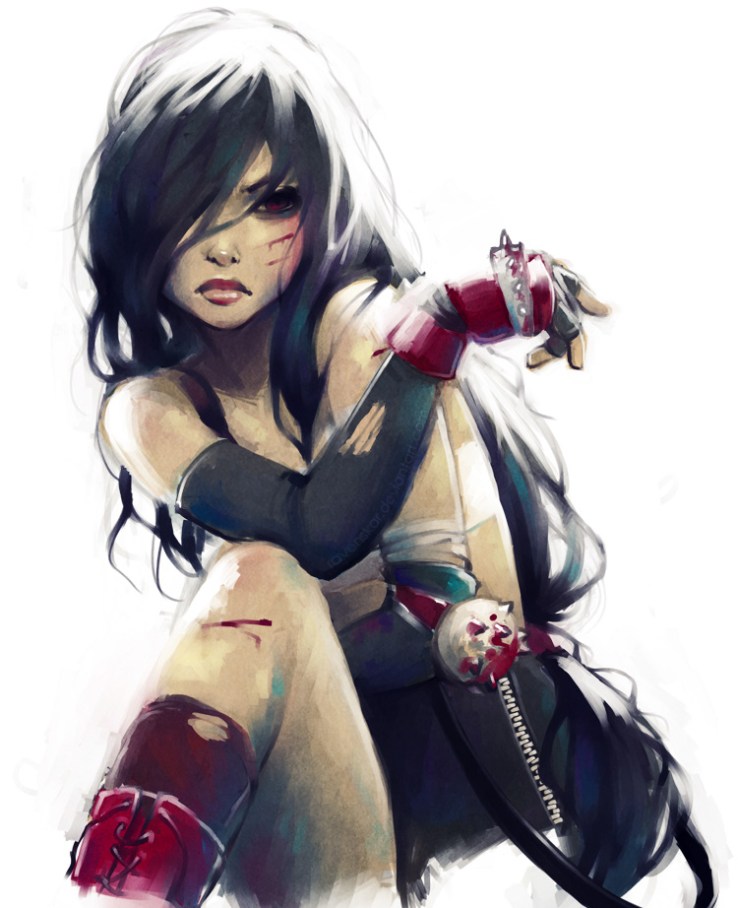If we can assume that the fantasy trope of mystical female other in bondage gear is popular among men, perhaps we can likewise assume that the fantasy trope often referred to as Draco in Leather Pants is popular among women. According to this trope, a man with a complicated past, equally complicated motivations, and a markedly antisocial streak has a heart of gold somewhere deep inside – especially if he’s handsome. The character Balthier from Final Fantasy XII meets all of these conditions; and, judging from the amount of fan fiction and fan art that has been created in his honor, female fans of the game love him.
It is therefore not unreasonable to argue that Balthier’s design and characterization both contain just as many fetish elements as Fran’s. After all, the male characters in the Final Fantasy series are subject to the same narrative tropes as the female characters. If Rydia is wedged into the role of spell caster by virtue of her gender, then Cecil is similarly cast into the role of the dark/white knight by virtue of his own gender. Moreover, if Rydia is sexually attractive to men, Cecil is perhaps even more attractive according to non-heteronormative female standards of male beauty (which include delicate features and long, willowy limbs). This is fantasy, and we want our characters to be attractive, and interesting, and suitably epic. There is no rule, after all, that says fantasy has to be any less subject to the confines of narrative tropes than, say, interwar French existentialist fiction.
If everyone in the Final Fantasy games is fetishized, and if everyone is subject to gendered tropes, however, can the series really be called “feminist”? Through my discussion of Rydia, Aeris, and Fran, I have attempted to prove that each successive game in the Final Fantasy series has become less sexist and phallocentric. I posited at the beginning of this essay that a “feminist” work contains “strong” (by which I mean “multi-dimensional” and “featured prominently”) female characters who are not villainized. By this standard of judgment, the games in the Final Fantasy series are indeed feminist works. Even though the player-protagonist is often male, this character is usually subordinate to the narrative importance of a central female character. Even though the story of this female character is seen through the eyes of a male character, it is her story that is being told, and the male player-protagonist is just along for the ride. While the player controls the gameplay, the actions of the female protagonist advance the plot and open more of the game’s world.
Although we could once safely assume that the gamer behind the player-protagonist was male, this is no longer the case; he is now just as likely to be controlled by a woman. The player-protagonist may have his own story, but he is also the eyes through which the player looks and the hands and feet by which the player explores and manipulates the world. Such a direct player identification thus makes his identity somewhat less than stable, along with his gender and sexual orientation. The player-protagonist is arguably little more than a cipher in many situations (such as Tidus in Final Fantasy X, who is never addressed or referred to by name, lest the player’s identification with him be impeded), and the true spotlight shines on the female protagonists of the series, such as Rinoa, Garnet, Yuna, and Ashe.
Perhaps, because these female characters were created by development teams consisting primarily of men, they can never be considered “pure” feminist role models, but there is another side to the equation – the female (and male!) fans of the series who have been inspired by these characters and have interpreted them in ways that may differ wildly from the original intentions of their creators. As I have argued elsewhere, a text does not end with the “Game Over” screen but rather spins into ever wider and deeper perversions in the personal fantasies of the player. These personal fantasies can then be reinforced and expanded upon when introduced into larger communities of gamers. Player reception is engaged in a feedback loop with Square-Enix, which has used the enormous revenue it has earned from the Final Fantasy franchise in order to develop games that will better appeal to its fans, both new and old. The strong female characters of the series have resulted in a large and vocal female following, which has in turn resulted in Final Fantasy XIII, a title that has been celebrated as a truly feminist video game. As gaming technology becomes more sophisticated, and as the narrative mechanisms of role playing games become more innovative and complex, I am looking forward to meeting the female characters in the future of Final Fantasy.
I cannot claim to have the final word on Final Fantasy, or on the topic of video games, role playing, and gender. Allow me to therefore cite my sources and inspirations, both online and in print.
The absolute best pieces of writing on Final Fantasy that I have ever had the pleasure of reading are collected under the title The Rise and Fall of Final Fantasy. Each of these essays is quite long, but each is beautifully written and provides all of the background information I have omitted, which is presented in a humorous and highly intelligent tone. The online video game “magazine” The Escapist recently posted a video essay called True Female Characters, which is a bit superficial in terms of analysis but makes some good points and provides several examples of female characters in video games who are prime examples of sexist stereotypes. A short, journalistic article called Getting the Girl offers an interesting counterpoint to this discussion in the light it sheds on female game developers and the market pressures they face when designing female characters. The website The Mary Sue has a number of interesting pieces on women and geek culture, including statistics relating to female gamers.
If you’re interested in other aspects of the Final Fantasy series as viewed from a “scholarly” analytical perspective, there is an essay in Mechademia 4: War/Time titled “Imagined History, Fading Memory: Mastering Narrative in Final Fantasy X.” This essay is somewhat crippled by the word count imposed by the journal, but it contains an interesting argument relating to how the narrative structure of the game may relate to Japan’s experience of modernity. There are also several interesting and tangentially related articles in an academic journal called Games and Culture, including an essay on ethics in Final Fantasy VI and Final Fantasy VII, as well as an interesting piece on fantasy races in MMO-RPGs.
On a broader level, Sharalyn Orbaugh’s “Busty Battlin’ Babes: The Evolution of the Shōjo in 1990s Visual Culture” (found in the collection Gender and Power in the Japanese Visual Field) is an excellent discussion of cross-gender character identification in a Japanese context. All four chapters of Tania Modleski’s short but brilliant Loving with a Vengeance discuss the romance tropes surrounding male characters and might be useful for a sustained inquiry into why a character like Balthier (or Sephiroth) is so popular with female fans. Finally, while I was writing this essay, I was addicted to Eleanor Byrne and Martin McQuillan’s Deconstructing Disney, which opens by making a strong case for why we should continue to analyze popular culture and then goes on to provide an fantastic model of how to do so.
All of the games and characters I have discussed, as well as (almost) all of the images I have borrowed, belong to Square-Enix. Square-Enix, I love you. Please don’t sue me.

